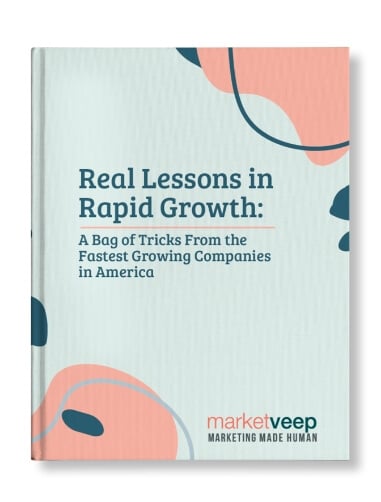Streamline Your Sales Pipeline Management with These 5 Tips


By Market Veep
Streamlining your sales pipeline management is one of the best things you can do for your company. The cleaner your pipeline is, the easier it’ll be to manage. And the easier it is to manage, the more deals your sales team will be able to close. Here are some sales pipeline management tips to help get you going.
Your company’s sales pipeline touches every stage of your sales process. It not only helps you keep track of where a lead is in that process, but also provides your sales team with a way to estimate how much money you’re projected to make.
However, it’s not enough to recognize the importance of your sales pipeline; you have to manage it too. Like any tool in your kit, you have to make sure your sales pipeline continues to perform like a well-oiled machine. Let it sit for too long, and your sales forecasts will grow cluttered and inaccurate.
To help you streamline your sales pipeline management process, and ensure that you always have a crystal-clear view of your buyer’s journey, we’ve put together a few tips for you.
With these developments in mind, the days of siloed sales and marketing teams have approached their end. However, as you approach the bottom-of-the-funnel, the line that separates sales and marketing can begin to blur, making it difficult to tell if your teams are achieving their goals. As vital as departmental alignment is, how can you ensure that both departments are not only happy but also producing the kind of ROI your company needs?
The solution lies in closed-loop marketing, and its partner-in-success, full-funnel marketing. Here’s how implementing these strategies can help you win more sales and better understand (and act on) the analytics associated with your sales pipeline.
Exploring the Pipeline
Marketing shouldn’t work exclusively at the top-of-the-funnel, and sales shouldn’t relegate itself to the bottom-of-the-funnel. The two teams need to be comfortable exploring the top and bottom of the sales and marketing pipelines if they want to meet prospects where they’re at and help them reach the climax of their buyer’s journey.
A full-funnel marketing strategy can do this. As explained by Bizible, full-funnel marketing is when “marketers care about the entire funnel. Since the funnel ends at revenue generation, not lead generation, both the marketing team and the sales team should have the goal of generating revenue.”
If closed-loop marketing occurs when sales teams report to marketing with a breakdown on what happened to the leads they received, then full-funnel marketing is the precursor to that. By exploring the full-funnel pipeline, your marketing can guide prospects through each step of their journey, with each step garnering a different tactic. This helps marketers improve their sales pipeline management and prioritize the kind of marketing that brings in consistent ROI.



2) Make It Your Own
Every company is different, and what works for one may not work for another. While you can certainly learn from, and be inspired by, other companies, your sales pipeline needs to be specifically designed for you and your company’s needs. In the same way that Luke Skywalker needs “an elegant weapon from a more civilized age” for his quest, so too does your company need a personalized tool to help it on its journey to success.

When you’re designing your sales pipeline, you might want some help (Luke didn’t learn the ways of the Force on his own, after all).
.gif?width=500&name=Sales%20Pipeline%20Management%20-%20Star%20Wars%20reference%20(2).gif)
This is where HubSpot CRM can help. “Whether you have an established sales process or you’re starting from scratch,” the tools HubSpot’s CRM provides will make it easy to create the ideal pipeline for your sales process.

(Source: HubSpot)
Like you can see in the image above, HubSpot’s sales pipeline management tools allow you to “Add, edit, and delete deal stages and properties without help from IT, and push deals forward by assigning tasks to your team. Then drag and drop deals between stages when they’re successful.”
3) Keep It Clean
It can feel counterintuitive to adopt a “less is more” mentality in the world of marketing. More prospects means more sales, right? Not always. When it comes to sales pipeline management, you need to prioritize the warmest leads (the people most likely to close). And sometimes, this means letting go of leads who aren’t going to do business with you.
Our friends at HubSpot say it like this: “Periodically cleaning up your pipeline is key if you want an accurate sales forecast. That’s because most forecasts use an opportunity’s stage to determine how likely it is to close -- not its age.” If you let cold leads stick around for too long in your pipeline, they can siphon resources and attention away from the sales-ready leads just waiting for that final push.
Successful sales pipeline management takes time, so don’t try to rush it. HBR reports that companies who spend at least three hours a month managing their sales pipeline “saw 11% greater revenue growth than those that spent fewer than three hours per month.” Salesforce conducted a similar survey and found that spending at least four hours a month managing the pipeline “realized 14 percent greater revenue growth than those that spent less than one hour per month.”
The bottom line is this: if you want your sales pipeline analysis to lead to positive results, you have to keep it clean. Letting outdated or no-longer-interested leads clutter the pipeline will slow down your sales process and keep you from closing deals with the right people at the right time.
4) Use The Right Tools
Keeping your pipeline clean and organized is great. So is having a clearly defined pipeline process. But if you can’t track the progress, and diagnose the health, of your pipeline, then all of those best practices won’t be of much use to you. Thankfully, HubSpot (and its many intuitive integrations) can help you do just this.
With HubSpot CRM, you can “Use your sales dashboard to check on progress toward sales quotas, monthly trends in key sales activities, and the overall value and health of your pipeline.” This will give you complete visibility on your sales team’s performance, what your deal forecast is, help you identify blockages in your pipeline, pinpoint which leads are most sales-ready, and track how many deals you've closed to-date.

(Source: HubSpot)
Here are just a few (of the many) of our favorite HubSpot sales pipeline management tools (that all integrate with the HubSpot CRM):
- Drift: This tool is designed to help you increase website conversions, better connect sales and marketing, and allow your salespeople to respond to website visitors via live chat from their email or Slack.
- VOIQ: For the first time, you can automate your sales calls in the same workflow you use to automate your email, chatbots, and other channels. This integration is highly customizable, so it can fit right in with your brand’s tone and voice.
- Vidyard: With this tool, you can send personalized videos directly to prospects via email. And since it integrates with HubSpot CRM, you can track views and clicks too.
5) Train Your Team
If you want to streamline your sales pipeline, then you’re going to need to have a sales team who knows how to manage it. According to HBR, over 60% “of executives admit their sales managers have not been adequately trained in pipeline management strategies and techniques.” Which is downright tragic, because HBR also reports that companies who train their salespeople to manage the sales pipeline “saw their revenue grow 9% faster than those that didn’t.”
Success doesn’t happen overnight; it takes time, patience, and training. If we want to close leads and maximize ROI (or face down Darth Vader himself), then your sales team “must complete the training.”
With these sales pipeline management tips on your side, you’ll be well-equipped to create, curate, and maintain a pipeline that’ll meet the needs of your company and its customers.
Get The Latest From
Market Veep
RELATED ARTICLES

Master Sales Funnel Strategies: Tofu Mofu Bofu!
Between SEO, SEM, and SERPS, we’re always finding clever ways to break down concepts into four...

HubSpot Sales Forecasting: Optimizing Manufacturing Success
As important as it is, manufacturing forecasting tends to be a stressful, time-consuming task with...

How Manufacturers Can Boost Sales with PPC
When approached correctly, PPC for manufacturers can help your company establish a strong online...

Get Growing!
Download our eBook and get advice from 8 CEOs of Inc. 5000 companies in their own words.

GREAT MARKETING PARTNER
Market Veep is a great firm that handles all of our marketing efforts. This is the second time that I have used the firm. I highly recommend Market Veep!

Cres F.

EXCEPTIONAL EXPERIENCE
Market Veep's Onboarding Experts in Inbound Marketing are an absolute game-changer! From the get-go, their approach was top-notch. Market Veep's team has undoubtedly set the bar high for excellence in inbound marketing. Five stars aren't enough to commend their outstanding service!

Matthew W.

BEST PARTNER EVER!
As a growing business, setting up our first-ever HubSpot account was a crucial step towards enhancing our marketing and customer management strategies. From the moment we contacted MarketVeep, their team demonstrated professionalism, expertise, and a genuine desire to help us succeed. Overall, our experience with MarketVeep was exceptional, and we couldn't be happier with the results. Thanks to their guidance, we are now utilizing HubSpot to its fullest potential, streamlining our marketing efforts, and nurturing leads more effectively.

Jean M.

SET UP FOR SUCCESS!
We had an exceptional experience with Market Veep! Their team is professional, super organized, and friendly, and I truly enjoyed working with them. They executed on time and made the process super easy with their organization and documentation. In addition, they provided additional guidance and answered my many questions as I was new to HubSpot, and provided documentation resources for future use. We're now set up to leverage all that HubSpot marketing has to offer, and we couldn't have done it without Market Veep's expertise.

Bailey G.

OUTSTANDING WORK
There aren't enough words to describe the outstanding, professional work MarketVeep has provided to our company. From start to finish, the website design/development team at MarketVeep assigned to our project was extremely knowledgable, respectful, efficient and timely. The results went above and beyond our expectations and we could not be more thrilled with the improvements to the user experience on our website! Bravo MarketVeep, we'll absolutely be back with more projects!

Nadine B.

5 STARS FOR MARKET VEEP!
We had a fantastic experience with Market Veep! Their expert team seamlessly guided us through implementing HubSpot and provided comprehensive training across Sales, Service, and Marketing Hubs. Their knowledge and support significantly enhanced our workflow and overall efficiency. Highly recommend Market Veep for top-notch HubSpot solutions!

Anneke C.







